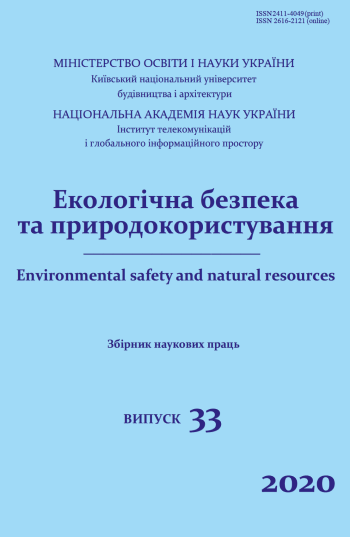Method of building a mathematical model of layered flows
DOI:
https://doi.org/10.32347/2411-4049.2020.1.115-130Keywords:
mathematical models, layered flowsAbstract
The method of constructing mathematical models for plane-parallel layered flows is considered. Given that the flow structure implies simplification and splitting of the problem, it is shown that, for planar parallel fluxes, it is possible to construct a layered flow model in which the problem solution is constructed by the method of separating variables. It is shown that for each layer of flow it is possible to distinguish a function whose derivatives determine the velocity distribution in the layer and which can be interpreted as "flow potential in the layer". But the potential representation for the velocity field distribution in a layer has a parametric dependence on a variable that is orthogonal to the plane currents. Although there is a function that can be interpreted as the "potential" of a flow in a layer, the most common layered flow (as a whole) is not potential. Only a stream the averaged of a layer thickness can be considered as a potential flow. When constructing models, the viscosity, non-stationarity and inertia of the flow are taken into account (by taking into account nonlinear dynamic components). It is shown that the mathematical models constructed, of some cases of the stream, represent the classical solutions for layered flows.References
Ivanov, V.A., & Fomin, V.V. (2008). Mathematical modeling of dynamic processes in the sea - land. Sevastopol: National Exhibition Center "EKOSI-Gidrofizika". (in Russian)
Schkadov, V., Zaprianov, Z. (1984). Techenie vjazkoy jidkosty. Мoskow.: Izd. MSU. (in Russian)
Cherni, D.I. (2016). Mathematical model of the flow in the shallow water area. Bulletin of Kharkiv National University of V.N. Karazina, Seriya “Mat. fashion model. Informacion technology. Automation Systems Management”, (29), 78-86. (in Ukrainian)
Cherniy, D.I., Voskoboynik, V.A., & Voskoboynik, O.A. (2016). Experimental and mathematical modeling of layered flows in a flat channel. Abstracts of Papers. Naukovo-practical conference “Comp'yuterna gіdromekhanіka”. Kyiv, September 29–30, 2016. (pp. 68-69). Kyiv: Institute of gidromekhanіkі NAN Ukraine. (in Ukrainian)
Kordas, O., Gourjii, A., Nikiforovich, E., & Cherniy, D. (2017). A study on mathematical short-term modelling of environmental pollutant transport by sea currents: The Lagrangian approach. Journal of Environmental Accounting and Management, 5(2), 87-104 (DOI: 10.5890/JEAM.2017.06.002).
Dovgy, S.A., Lifanov, I.K., & Cherniy, D.I. (2016). The method of singular integral equations and computational technologies. Kyiv: Euston Publishing House. (in Russian).
Dovgiy, S.O., Lyashko, S.I., & Cherniy, D.I. (2017). Algorithms of Discrete Singularities Method of Computational Technologies. Cybernetics and System Analysis, (6), 147-159. (in Ukrainian).
Cherniy, D., Dovgiy, S., & Meleshko, V. (2013). The Vortex Model of a Viscid Wall’s Layer. Abstracts of Papers. IUTAM Symposium on ”Vortex Dynamics: Formations, Structure and Function”, Fukuoka, Japan, March 10–14, 2013. (pp. 126-127). Fukuoka: Centennial Hall, Kyushu University School of Medicine.
Voskoboinick, V., Voskoboinyk, O., & Cherniy, D. (2019). The modeling of different scale hydrologic processes in aquatories. Environmental Safety And Natural Resources, 29(1), 87-98. doi:http://dx.doi.org/10.32347/2411-4049.2019.1.87-98 (in Ukrainian)
Downloads
Published
How to Cite
Issue
Section
License
Copyright (c) 2020 Dmytro I. Cherniy

This work is licensed under a Creative Commons Attribution 4.0 International License.
The journal «Environmental safety and natural resources» works under Creative Commons Attribution 4.0 International (CC BY 4.0).
The licensing policy is compatible with the overwhelming majority of open access and archiving policies.

